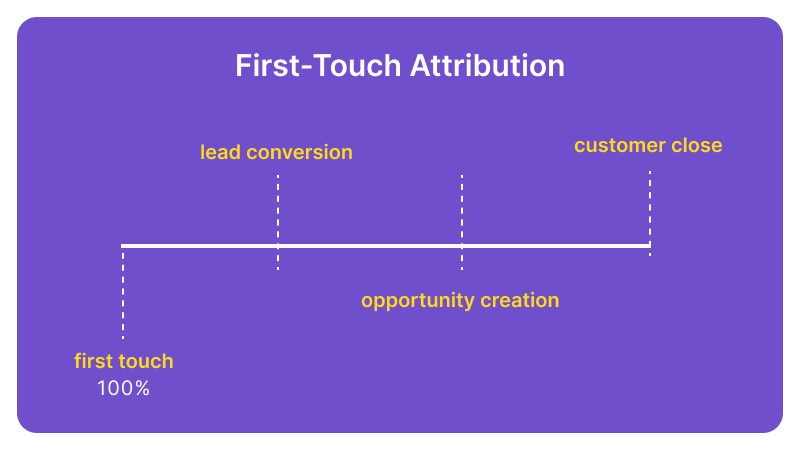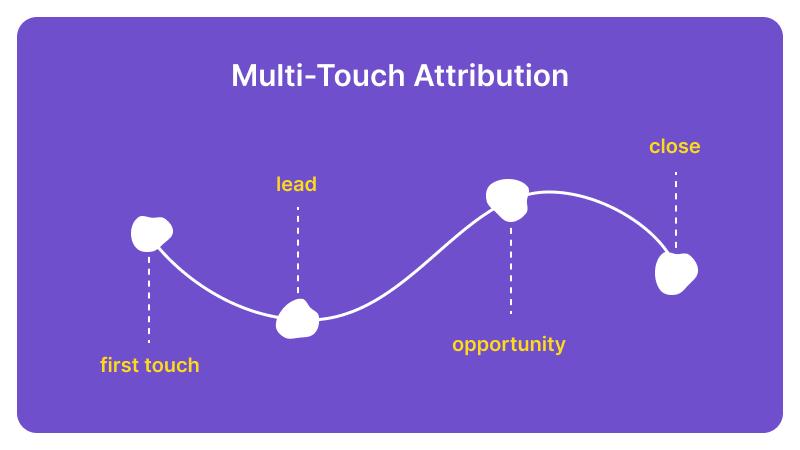Ready to improve your marketing ROI?
Fast registration. User-friendly interface. Robust integrations.
Disclaimer: Attribution models help identify the most effective parts of a marketing strategy without blowing the budget.
When dealing with advertising campaigns, marketers need to monitor their productivity. Call tracking software is used to track the number of leads generated by the ads. However, here we mean those leads who decided to call before making an appointment to find out the details. In the Dialics blog, we have already discussed the types of call attribution related to call tracking ad campaigns. In this article, we will focus on more conventional attribution models that can be used with typical marketing initiatives.
What is marketing attribution?
Marketing attribution is the process of assessing marketing efforts and determining the most effective steps in the marketing strategy that generate most of the leads. To put it simply, marketing attribution helps answer the question, “Why does this customer buy my product?” Without the Internet, the answer to this question would be obvious. A person was walking down the street, noticed a nice store, went in, and decided to buy a new outfit because the shop assistant was very convincing. In the digital world, a person may stumble across a whole bunch of ads, talk to the sales manager in the chat, put a product in the basket, forget about it, and finally buy it a week later after noticing an ad in the Instagram news feed. In such a situation, it would be a mistake to think that an ad on Instagram was a decisive factor. All of the preceding steps should be taken into account. That is what marketing attribution is used for.
Why is marketing attribution important?
The main reason for analyzing marketing attribution models is to avoid blowing away budgets. If a company uses several methods of advertising, be it direct mail, cold calls, or social media ads, but the conversion rates are highest with an email campaign, this company should stop wasting money on social media and concentrate more on newsletters. Therefore, marketing attribution identifies the most productive conversion sources for businesses and allows them to plan their budgets accordingly.
Apart from that, marketing attribution is one more tool that should be used by marketing departments to provide companies with high revenue and a steady flow of customers. Together with various advertising campaigns, call tracking platforms, and internal CRM systems, marketing attribution is used for optimizing processes inside the organization. Marketing and sales departments should work hand in hand and clearly communicate to increase ROI and keep a careful track of existing clients.
What is a marketing attribution model?
A marketing attribution model is a set of rules applied to analyze why a customer decides to close a sale. In other words, it shows the trigger that pushes a customer toward conversion.
What are the types of marketing attribution?
There are different approaches to measuring marketing attribution. We will focus on the two traditional types: single-touch and multi-touch attribution models. The first analyzes the only touchpoint that leads to a conversion. The second takes into account several touchpoints that together result in a successful conversion. Each of the types has several other subtypes, and every one of them provides marketers with valuable insights and food for thought on how to improve performance and increase sales.
Single-touch attribution model
Single-touch attribution assigns a conversion to a single touchpoint. Usually, it is the first or last touch.
First-touch attribution is considered important, as it is the first step on the way to becoming a client. Without getting to know a brand, further interactions are impossible. First-touch attribution models can be used successfully to measure customer awareness of the brand and see which of the ads is better at introducing your business to the target audience.
Last-touch attribution is the last interaction with a product before buying it. It is identifying the decisive factor. This model assists in identifying the ad that promotes conversion. However, it may be inaccurate.
Both models are considered rather primitive and limited according to modern marketing trends. People are overwhelmed with information today. They may forget about an idea to buy a new vacuum cleaner because they are distracted by someone and get back to that idea later when they suddenly face an ad banner in the browser. However, it would be a mistake to grant credit only to the final banner, as during the previous interactions there might have been a satisfying conversation with a technical expert or an attractive special offer described in a newsletter. All of those interaction points should be assessed from the perspective of their persuasion potential.

Multi-touch attribution model
This attribution model is more popular among marketers as it provides them with more useful data. We will concentrate on some of the multi-touch model types in more detail.
Linear
This one is the simplest among multi-touch models. It assumes that each touchpoint is given the same weight. Therefore, all the marketing efforts are treated equally.
Time decay
In this model, the latest touchpoints are given the most weight. It is widely used for the products, the sales cycle for which is long. In this case, the earlier interactions may be well-forgotten and the later ones lead directly to conversions.
U-shaped
This model is used to measure the first and last interactions. Therefore, it shows which of your campaigns build brand awareness and which of them play a final role in the conversion.
W-shaped
This model is similar to the previous one. However, to the first and last interactions, one more is added - the one that makes our target customer a qualified lead.
Full path
This attribution model is a detailed one, and it assesses the interactions according to their four purposes. The first touchpoint builds brand awareness; the second generates a lead; the third supports the interest of purchasing a product; and the fourth is an actual conversion.
Custom
This one is for the true experts. It implies assigning weight to the touchpoints by the marketers themselves. The process is rather complicated as it involves deep knowledge of the business domain, target market, and channels used.

Which model to choose for a business?
The choice of a suitable attribution model depends on plenty of factors. Unfortunately, there is no universal solution. First, you need to understand what goals you wish to achieve with the help of an attribution model applied. If you are interested in the effectiveness of the campaigns aimed at building brand awareness, then first-touch attribution will be sufficient for you. If you wish to get more insights, try multi-touch attribution instead. Marketers can try several models to understand which of them provides them with more valuable data. Unpredictability is both the best and hardest aspect of marketing. Since you can never be sure of how something will turn out, you constantly learn and try new things.
Call tracking and marketing attribution
If your business relies on phone calls from customers, call tracking software may be what you're looking for. It allows marketers to assign each of the ads a virtual phone number and monitor their performance in real time. We have described the whole process in detail in the blog post “What is call tracking and how does it work?” In a nutshell, call tracking provides users with the following data:
- real-time analytics regarding the calls, i.e., the number of generated leads
- costs per lead to control the budget
- insights regarding the customer route and profile
- possibility to track online and offline ads on one platform
- opportunity to expand the business worldwide with international phone numbers
Besides, there are additional features like the IVR menu, call recording, and others that help organize the working processes better and reach business goals in no time. If you feel interested, do not hesitate to contact our team. We will be happy to assist you as soon as possible.
Ready to improve your marketing ROI?
Fast registration. User-friendly interface. Robust integrations.

